
Für eine deutsche Übersetzung dieser Seite einfach die Brandenburger Flagge anklicken
 |
Click the Brandenburg Flag for a German translation Für eine deutsche Übersetzung dieser Seite einfach die Brandenburger Flagge anklicken |


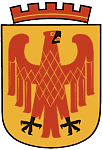 |
Home Towns - Potsdam, GermanyPotsdam's Gates |
 |


 |
This site is part of our Potsdam, Germany site. Click the left turn sign to get back to the Potsdam Start Site. |


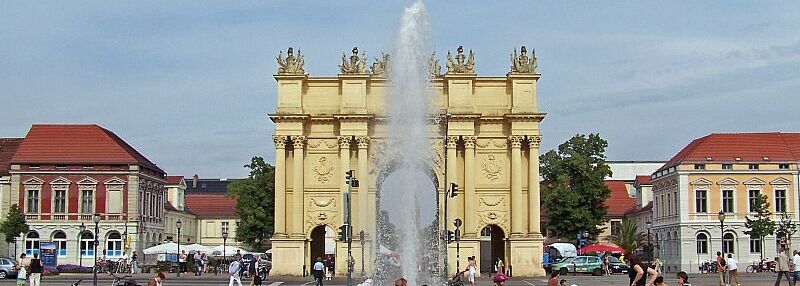
|


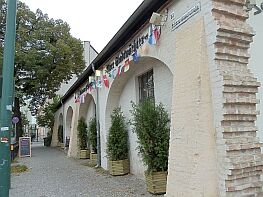 |
 |
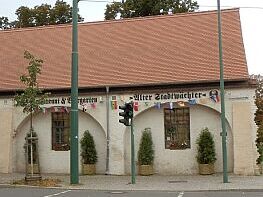
|


| There were five gates in the wall, three of which are still standing today. |


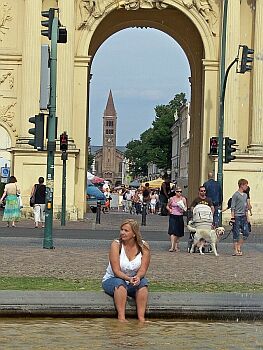 |
XXXXXXXXXXXXXXXXBrandenburg Gate
Not to be confused with the famous Brandenburg Gate in Berlin, this gate in what is now downtown Potsdam is 18 years older than its famous
namesake. The reason for the name is the same in both cases: the roads starting at both Brandenburg gates used to lead to the town of Brandenburg.
|
 The fountain in the center was originally designed in 1854 by Joseph Lenne. It was demolished in the early 1900s and rebuilt in 2001. |

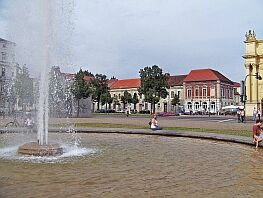 |
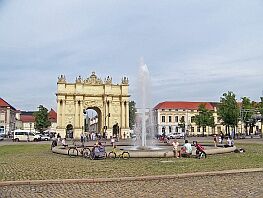 |
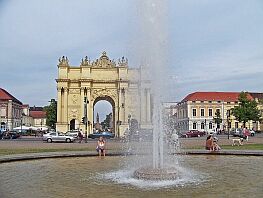
|
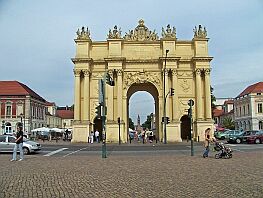 |
 |
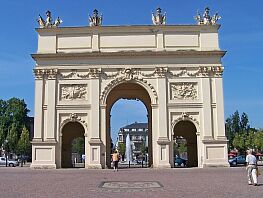
|
| Country-side of the gate | City-side of the gate |

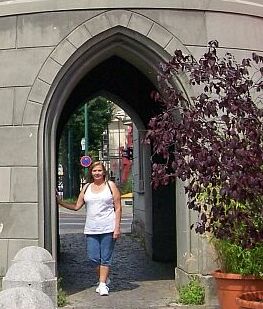 |
XXXXXNauen Gate
The Nauen Gate has been part of Potsdam's fortification since 1720. The current gate was designed by Johann Gottfried Büring, after an original sketch by King Frederick the Great. It was built in 1755 and is one of the first examples of English Gothic Revival architecture in Continental Europe. |
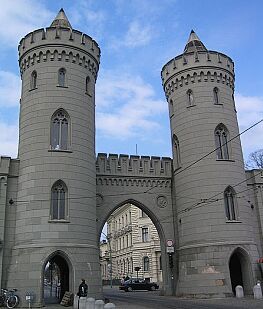 |

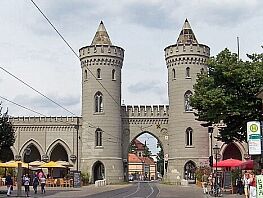 |
 |
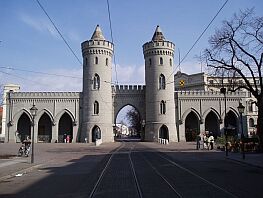
|
| City-side of the gate |
Right next to the Nauen Gate is Potsdam's City Hall. |
Country-side of the gate Picture borrowed from Wikipedia |


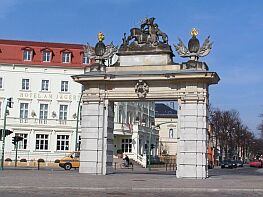 |
XXXXXXXXXXXXXXXXHunter's Gate
Built in 1733, the Hunter's Gate is the oldest of Potsdam's three preserved
gates. It is named for the royal hunting grounds that used to be right
beyond the gate. Apparently, the name of the architect has been lost in time.
|

 |
 |

|


| Onle a few remains are left of the other two gates. |


 |
XXXXXNeustadt Gate
The original Neustadt Gate was built in 1753 under the supervision of Georg von Knobelsdorff. It consisted of two obelisks, adorned with Egyptian looking hiroglyphs. Since original hiroglyphs were not deciphered until the 1820s, the "writing" on the obelisks was pure fiction. |
 |

| The gate was severely damaged in World War II. Only one obelisk survived intact. In 1969, when one of Potsdam's main streets was extended further west, the remains were completely demolished. The one surviving obelisk, however, was restored in 1981 and was placed near the original location of the gate. |


 |
XXXXXXXXXXXXXXXXBerlin Gate
The original Berlin Gate, built in 1733, was a lot closer to the
center of town. In 1745, after an expansion of the town, a new city wall was built and a new gate was needed. It was designed and built in
1753 by Johann Bouman, under direct supervision
of King Frederick the Great. Originally, this
gate in the east of town was a Triumphal Arch similar to that in the west, the Brandenburg Gate.
|


| Original Pictures |
 PotsdamWiki has good articles in German language about all Potsdam gates of past and present. Each article is accompanied by at least one picture showing the gate in its original state. Click the pictures below to get to the articles and pictures. 
|
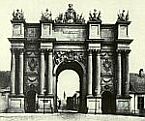 Brandenburg Gate, 1880
Brandenburg Gate, 1880 |
 Nauen Gate, 1850
Nauen Gate, 1850 |
 Hunter's Gate, 1735
Hunter's Gate, 1735 |
 Berlin Gate, 1895
Berlin Gate, 1895 |
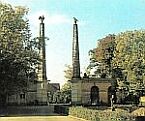 Neustadt Gate, 1940
Neustadt Gate, 1940
|
 In addition to the five gates in the city wall, there was also the Teltow Tor, which actually was just two custom houses at Potsdam's "Long Bridge." It was destroyed, when the German Army blew up the bridge at the end of World War II. 
|
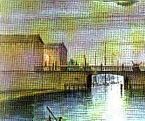 Teltow Gate, 1840
Teltow Gate, 1840 |
The city Canal too had to custom gates.
 In the east, there was the Cellar Gate, which was destroyed by British Bombs in 1945, and in the west, there was the Watergate, which has vanished so completely, that there isn't even a picture left. |
 Cellar Gate, 1910
Cellar Gate, 1910
|


 Back to Potsdam Page |
 Back to Home Towns |
 Back to Germany Page |
 Back to English Main Page |
 Back to Start Page |